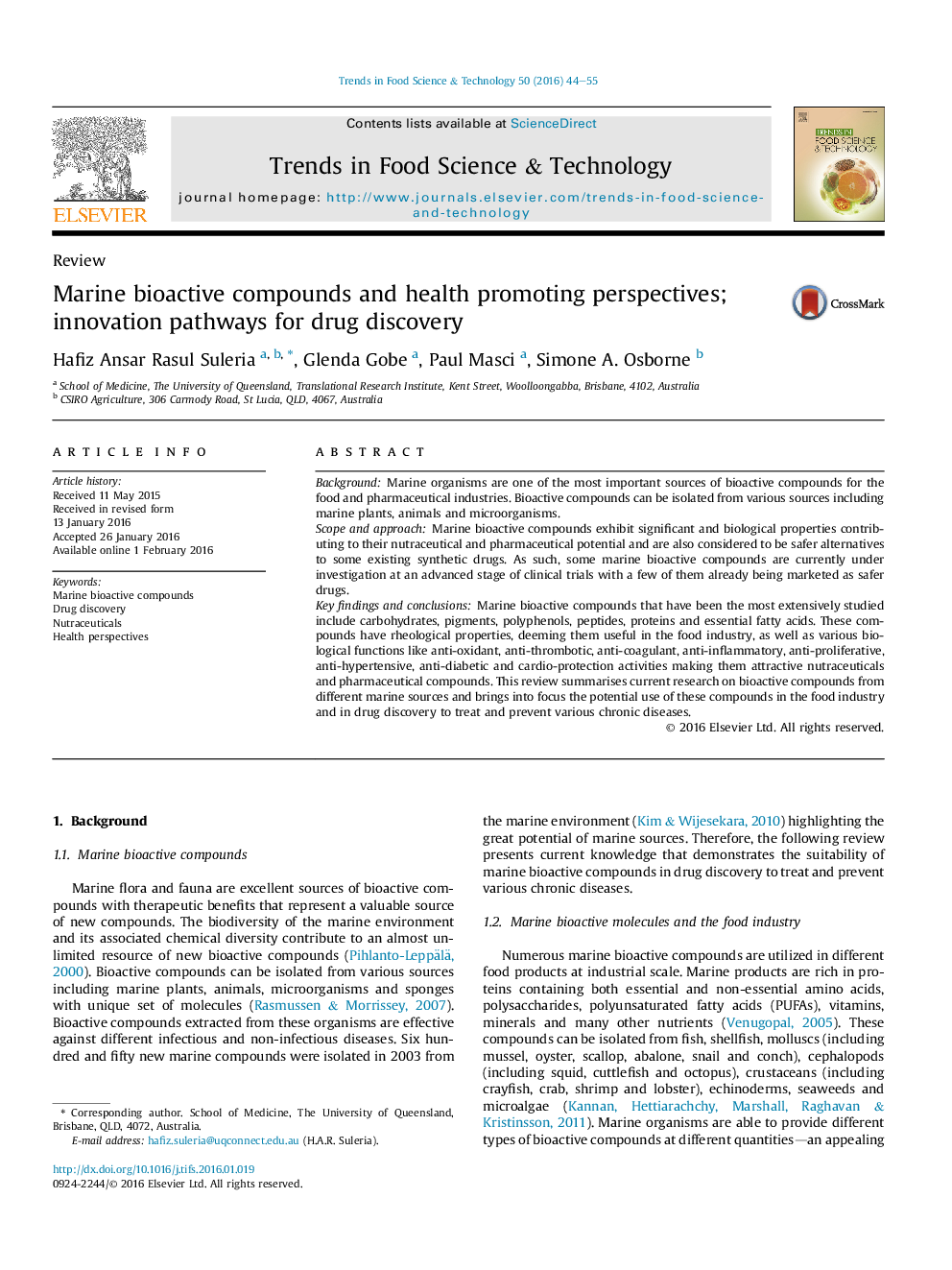| Article ID | Journal | Published Year | Pages | File Type |
|---|---|---|---|---|
| 2098449 | Trends in Food Science & Technology | 2016 | 12 Pages |
•This review highlights latest research on bioactive compounds from different marine sources and brings into focus the potential use of these compounds in the field of drug discovery to treat and prevent various chronic diseases.•Marine bioactive compounds exhibit significant nutraceutical and pharmaceutical potential and are also considered to be safer alternatives to some existing synthetic drugs.•It reflects the potential scope and utilization of marine bioactive compounds in food and pharmaceutical industry.•It also highlights the bioactivity of marine bioactives, standard methods, mode of action and mechanism involved to prevent and cure different disease.
BackgroundMarine organisms are one of the most important sources of bioactive compounds for the food and pharmaceutical industries. Bioactive compounds can be isolated from various sources including marine plants, animals and microorganisms.Scope and approachMarine bioactive compounds exhibit significant and biological properties contributing to their nutraceutical and pharmaceutical potential and are also considered to be safer alternatives to some existing synthetic drugs. As such, some marine bioactive compounds are currently under investigation at an advanced stage of clinical trials with a few of them already being marketed as safer drugs.Key findings and conclusionsMarine bioactive compounds that have been the most extensively studied include carbohydrates, pigments, polyphenols, peptides, proteins and essential fatty acids. These compounds have rheological properties, deeming them useful in the food industry, as well as various biological functions like anti-oxidant, anti-thrombotic, anti-coagulant, anti-inflammatory, anti-proliferative, anti-hypertensive, anti-diabetic and cardio-protection activities making them attractive nutraceuticals and pharmaceutical compounds. This review summarises current research on bioactive compounds from different marine sources and brings into focus the potential use of these compounds in the food industry and in drug discovery to treat and prevent various chronic diseases.
